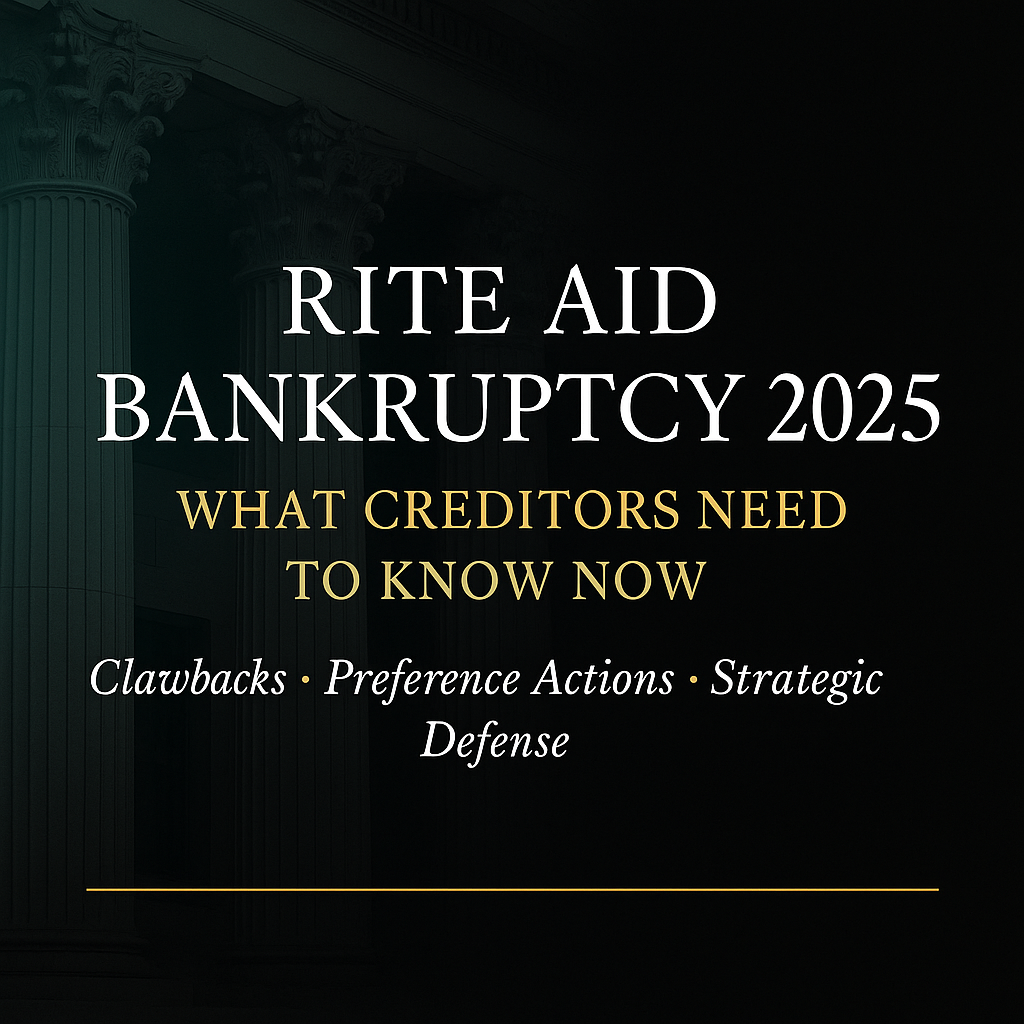Rite Aid Bankruptcy 2025: What Creditors Need to Know Now
The second Rite Aid bankruptcy has triggered a wave of clawback litigation. Here’s what creditors, vendors, and landlords need to know right now.
The Creditor Perspective: Clawbacks, Preference Actions & Strategic Defense
As the second Rite Aid bankruptcy unfolds, the company and its estate representatives have begun filing adversary proceedings seeking to recover pre-petition payments made to vendors, landlords, and service providers. These clawback or preference actions are authorized under Section 547 of the U.S. Bankruptcy Code and typically target payments made within 90 days before the filing.
Why These Claims Exist
The preference statute promotes equitable treatment among creditors. In the run-up to bankruptcy, some creditors may be paid while others are not. To avoid favoritism, the Code permits the debtor or a litigation trustee to recover certain payments for redistribution to all creditors.
Who Is Being Sued
Rite Aid’s newly filed adversary proceedings target a cross-section of trade creditors including pharmaceutical vendors, maintenance contractors, IT providers, landlords, and consultants.
Available Defenses
Affirmative defenses (§547(c)):
- Ordinary Course of Business,
- New Value, and
- Contemporaneous Exchange.
Substantive and strategic defenses:
- Insolvency challenges,
- Timing and payment analyses,
- Contractual setoff rights, and
- Equitable considerations (eg. mediation).
Strategic Recommendations for Creditors
- Do not ignore demand letters or complaints. Response windows are short; early engagement often leads to dismissal or nominal settlement.
- Preserve documentation (invoices, POs, ledgers, emails).
- Quantify “new value” offsets immediately.
- Engage experienced bankruptcy counsel to frame defenses correctly.
- Request mediation or early neutral evaluation when available.
If you’ve received a demand or complaint, our team can evaluate exposure, develop defenses, and negotiate efficient resolutions. Schedule a consultation.
Background: Rite Aid’s Second Chapter 11 Filing
Rite Aid filed for Chapter 11 on May 5, 2025, listing assets and liabilities each in the $1B - $10B range, just months after emerging from its 2023-24 restructuring. Drivers included persistent margin pressure, ongoing litigation exposure, and tightening trade credit. The company obtained $1.94B in DIP financing to fund operations and pursue asset sales.
Fire-Sale and Liquidation Process
Within weeks, the court approved a fire sale of pharmacy assets. Buyers included national chains and regional grocers. Over 1,000 stores were designated for closure, hundreds of prescription files were transferred, and remaining locations were vacated or liquidated. By October 2025, Rite Aid had ceased retail operations.
Implications for Stakeholders
- Customers & Communities: Loss of local pharmacies and emergence of 'pharmacy deserts'.
- Landlords & Vendors: Lease rejections and unpaid receivables move to the claims process.
- Industry: Accelerated consolidation around large national and online players.
- Legal Landscape: Surge in preference litigation; stress-tests of ordinary-course defenses in retail/healthcare.
Lessons from the Collapse
- Restructuring alone may not cure structural issues.
- Post-emergence trade credit is fragile and can trigger renewed distress.
- Preference exposure is predictable—and manageable—with disciplined terms and documentation.
Conclusion
Rite Aid’s second bankruptcy underscores the fragility of turnarounds in low-margin, high-regulation sectors and the predictable litigation cycle that follows. Creditors should act now - preserve records, quantify defenses, and position for efficient resolution.
Contact The Law Office of Magdalena Zalewski PLLC to discuss tailored defense strategies.
If you’ve received a demand or complaint relating to the Rite Aid bankruptcy, contact us to discuss defense strategy and recovery options.
Schedule a Consultation


